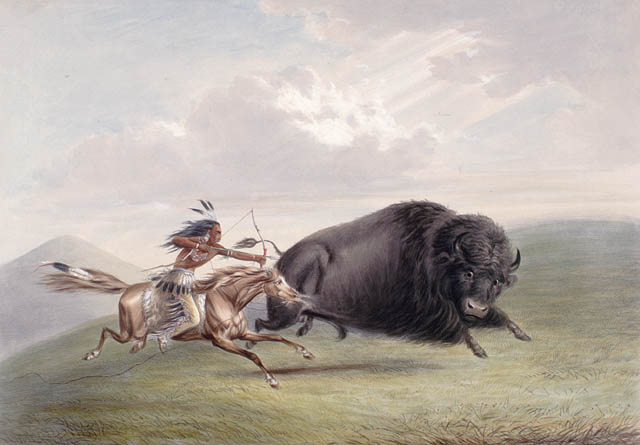Today in history, on July 4, 1882, more than 2,000 Native Americans excitedly set out after the first buffalo herd they’d seen in years. The Sioux of the Standing Rock Reservation were ecstatic, turning their days of preparation into a celebration. Not everyone would make the 100-mile trek; there were about 600 in the actual hunting party. Everyone participated in the ceremonies leading up to July 4, though, preparing supplies and embellishing ceremonial clothing.
The hunt began with the selection of eight scouts to go ahead and signal when they located the herd. The rest of the hunters would follow the next morning. That evening was the first of many feasts with dancing and storytelling. After several days of parties and walking, the Sioux approached the herd of almost 50,000 buffalo. They camped one more night, then dedicated the next day to the chaotic but exhilarating hunt. The band stopped at 5,000 kills, knowing they couldn’t utilize more.
Though buffalos used to be the center of existence for the Plains tribes, the recent influx of European settlers hunting for sport had decimated the population. The Native Americans hunted a large but sustainable number of buffalo. White hunters killed purely for entertainment with no regard for preservation. In fact, many spoke against preservation efforts in the belief that Native Americans would become more “civilized” if deprived of their great hunts.
Worse, white hunters took only what they wanted — usually hides and tongues — and left the rest of the buffalo to rot. Native Americans used every part of the sacred animal. By the 1880s, the tens of millions of bison had been reduced to only 100 and Standing Rock saw no more. Fortunately, aggressive conservation efforts have since saved the species from extinction.

